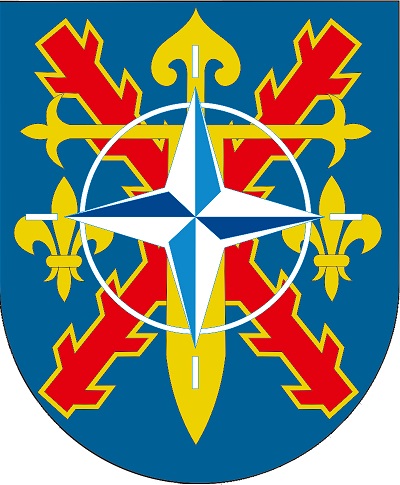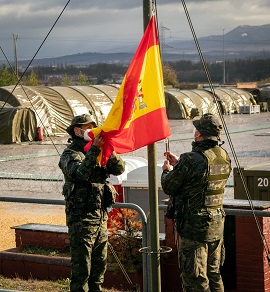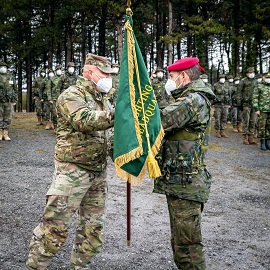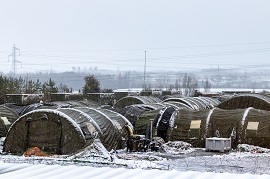- Inicio
- UNIDADES
- Valencia
- Headquarters NATO Rapid Deployable Corps (HQ NRDC-ESP)
- Noticias de la unidad
- 2021
- NATO Rapid Deployable Corps Headquarters Spain passes NATO evaluation to lead high intensity operations during the exercise STEADFAST LEDA 2021
MENÚ UNIDAD
UNIDADES DEL EJÉRCITO
- Araba Álava |
- Albacete |
- Alicante |
- Almería |
- Asturias |
- Ávila |
- Badajoz |
- Barcelona |
- Burgos |
- Cáceres |
- Cádiz |
- Cantabria |
- Castellón |
- Ceuta |
- Ciudad Real |
- Córdoba |
- A Coruña |
- Cuenca |
- Girona |
- Granada |
- Guadalajara |
- Gipuzkoa |
- Huelva |
- Huesca |
- Islas Baleares |
- Jaén |
- León |
- Lleida |
- Lugo |
- Madrid |
- Málaga |
- Melilla |
- Murcia |
- Navarra |
- Ourense |
- Palencia |
- Las Palmas |
- Pontevedra |
- La Rioja |
- Salamanca |
- Segovia |
- Sevilla |
- Soria |
- Tarragona |
- Santa Cruz de Tenerife |
- Teruel |
- Toledo |
- Valencia |
- Valladolid |
- Bizkaia |
- Zamora |
- Zaragoza

Noticias
jueves 2 de diciembre de 2021
Número:
NATO Rapid Deployable Corps Headquarters Spain passes NATO evaluation to lead high intensity operations during the exercise STEADFAST LEDA 2021
Once handover ceremony has been formalized, the NATO Rapid Deployable Corps Headquarters Spain, homebased in Bétera, Valencia, has passed the evaluation that certifies it is prepared and ready to conduct high intensity military operations (Warfighting Corps, WFC)
The HOTO was carried out between the British ARRC which has been WFC Headquarter until now, and preceded the Spanish one during 2021. After demonstrating its capabilities, the HQ NRDC-ESP will be during the year 22 the one that would have to lead operations of up to 120,000 international military personnel in the event of a crisis.
To be prepared, throughout the year 2021, the members of the Bétera Headquarters have been adapting their procedures and studying concepts, to counteract new factors that influence military operations, such as cyberspace, new technologies, or disinformation.
The culmination of this preparation has been the exercise STEADFAST LEDA 2021 (STLE21). A fictitious scenario has been created about a crisis that triggers a conflict in which a military unit at the Army Corps level, of up to 120,000 troops, has to face an adversary of similar characteristics facing a high intensity operation. This type of operation is the most complex that a unit of this level can face.
At the beginning of the exercise, a visit was received from the Spanish Chief of Staff of the Army accompanied by the NATO Joint Command Chief, as well as other military authorities and observers from allied countries.
During the exercise, the HQ NRDC ESP has been deployed at the Araca Base in Vitoria (Álava). More than 1000 people from 17 countries have participated in it. There have also been staff in Bydgoszcz (Poland) and Thessaloniki (Greece). To avoid the deployment of thousands of soldiers who would participate in a real operation, a computer simulation is carried out, with small cells that simulate large units with thousands of soldiers. In this exercise, the facilities of other headquarters are used linked through a NATO communications network, to manage the crisis with the consequent saving of personnel, resources and travel.
Hundreds of situations were simulated, forcing decision-making and the execution of procedures, which made it possible to verify that the HQ NRDC ESP is well prepared to lead multinational forces, if necessary.
During the execution phase of the exercise, the storm that crossed the peninsula in November supposed an additional real challenge which was satisfactorily resolved by the HQ and their support units. Heavy snow fell on the Command Post tents, but the rapid intervention of the Support Battalion personnel and the application of the planned procedures allowed the evaluation exercise to continue as normal. What looked like it could be a problem became further proof of this HQ ability to deploy in adverse situations.






